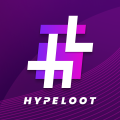GoodDollar is a blockchain protocol that draws upon the unique capabilities of decentralized finance (DeFi hereafter) to sustainably mint a basic income token for distribution to a global user network. Governed by the GoodDAO, a decentralized autonomous organization made up of highly engaged members of the community, the protocol is open, scalable and dedicated to the twin goals of bringing hundreds of millions of financially underserved individuals into the digital economy and addressing systemic inequity in the global economy.
The GoodDollar protocol presents a community-driven,distributed framework designed to generate, fund, and distribute global basic income via the GoodDollar token (hereafter “G$”). G$ is an ERC-20 digital asset built on the Ethereum blockchain that operates within the emerging ecosystem of decentralized and open finance. GoodDollar leverages new protocols and smart contracts across the ecosystem to deliver its basic income economy. GoodDollar functions as a wrapper of other protocols, and allows earnings generated in those protocols to be directed to fund the GoodDollar UBI ecosystem. Its flexible design enables it to wrap any DeFi protocol; enabling DeFi users to choose their preferred repository, and to direct their capital towards supporting UBI for all.
Inequality in wealth and income is arguably one of the greatest threats to the future of humanity and has been on the rise in nearly all nations since the 1980s. According to the 2022 World Inequality Report, the product of four years of exhaustive data mining by 100+ researchers across the globe, so-called “trickle-down” economics has proved a failure. The wealthiest 10% of the globe’s population now earns 52% of its income, whereas the poorest 50% takes home just 8% of that total. The gap is even more pronounced when it comes to wealth. Of the world’s total assets, the poorest half of the population owns just 2%, while the top 10% hold three-quarters. This gulf has only widened in recent decades with the rise in the ranks of global billionaires. Since 1995, the share of global wealth in the hands of the world’s billionaires has tripled, from 1% to 3% -- a concentration of riches that increased during the COVID-19 pandemic. According to the report, the wealth of the world’s billionaires swelled by a record amount during 2020.
In recognition of the dangers wealth and income gaps pose to global peace and security, the United Nations has singled out the reduction of both poverty and inequality in its 17 Sustainable Development Goals: the first and tenth, respectively.
This crisis has triggered fresh enthusiasm to explore new approaches to capital and liquidity distribution. While not a new idea, the notion of a universal basic income (UBI) – a flow of unconditional payments to individuals regardless of means – has emerged as a key policy proposal in nearly two dozen nations over the past several years. This presents a ripe opportunity to explore distributed, bottom-up approaches to basic income, which we believe can advance at greater speed than implementation by governments, as outlined in this white paper.
The concept is straightforward and builds on market adoption of yield farming and liquidity mining to attract and incentivize capital. Every day, a quantity of G$ is minted and distributed as basic income to verified users. G$ token is an automated-market maker - it is backed by a monetary reserve of additional cryptocurrency(ies), and hence, has instant value. The value in the reserve backing G$ is generated by people who deposit capital to decentralized third-party protocols, and direct their earnings to support the GoodDollar ecosystem. As new value is added to the reserve, G$ coins are minted. These are used to: a) pay out liquidity mining rewards to supporters b) pay out G$ to those making daily basic income claims. There is no pre-minting of G$--G$ are minted relative to the value of capital in the reserve. Over time and as more G$ supply enters the market and is adopted, slowly the currency is leveraged and more G$ coins are minted relative to GoodDollar’s reserve. The system is built to accommodate scale, whereby the value and utility of G$ to its holders increases as more supporters, recipients and merchants join the GoodDollar network.
The GoodDollar protocol presents all members an opportunity to vote with their money for a social cause they believe in, and invest in equality. GoodDollar protocol delivers a sustainable flow of free cryptocurrency to people most in need of access to capital and an onramp to the digital economy. The protocol aims to offer incentives to all who hold G$, whether they choose to participate as supporters of basic income or to claim G$ as daily UBI. This fosters a “trickle-up” basic income economy that focuses on wealth creation rather than wealth redistribution. The model creates an economic framework that aligns financial incentives with an accessible distribution method. The goal is a protocol that can successfully incorporate hundreds of millions of financially underserved individuals into the emerging digital economy by giving them access to real digital assets. GoodDollar is able to scale and sustain such a system by leveraging the unique capital infrastructure of DeFi to design a global impact economy governed by its members.
Our Mission: Trickle-Up, People-Powered Basic Income
GoodDollar is an open, people-powered decentralized protocol capable of generating a scalable and sustainable basic income token.
We strongly believe that a “trickle-up” value structure that delivers liquidity into the hands of people is preferable to the conventional trickle-down approach to capital, credit, and interest-bearing money conceived in the 1980s. The GoodDollar economy achieves this by delivering purchasing power directly to users who make daily claims while providing incentives for those whose staked capital is critical to powering the system. Aligning incentives between GoodDollar supply (users who stake) and demand (users who claim), and across all other key stakeholders, is central to the creation of a sustainable, scalable ecosystem around the GoodDollar economy.























